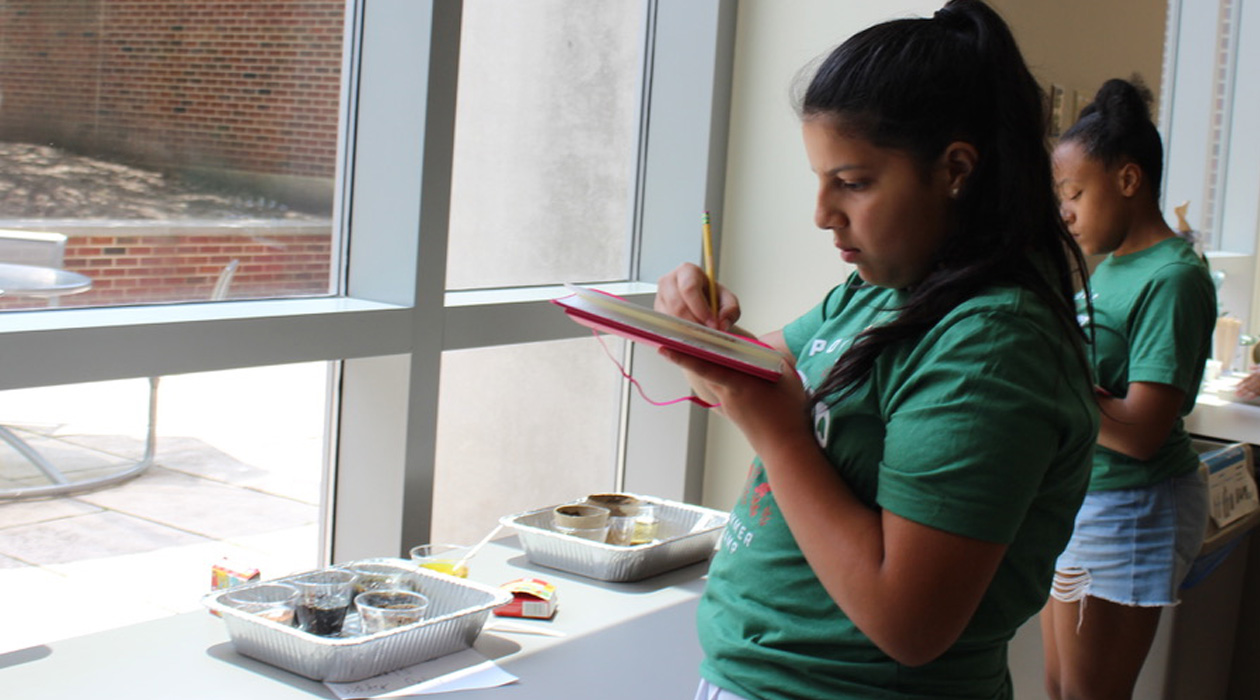Pollen Power camp: science on the summer horizon

Campers take notes on their plant growth experiment results. / Julia Pollack
An established and beloved program once again marked the beginning of the Champaign-Urbana summer break at the Carl R. Woese Institute for Genomic Biology, where the week-long summer day camp, Pollen Power, returned for its 12th year. The camp, offered in partnership with Unit 4 since 2022, helps children who attend to envision a future career in science by blending authentic lab experiences with classic summer fun.
Pollen Power is attended by rising fifth through eighth grades from Unit 4; the district contributed bus service and staff time to broaden the reach of the camp. The camp is made possible by support from the Center for Advanced Bioenergy and Bioproducts Innovation as part of its workforce development efforts. CABBI is a Department of Energy-funded Bioenergy Research Center housed within the IGB.
“This camp is in its fourth year of collaboration with IGB. This year we have students from eight Champaign Unit 4 schools,” said Zanne Newman, a STEAM instructional coach at Franklin STEAM Academy. “Students are provided Unit 4 transportation, free lunches and fabulous learning opportunities. Families love this camp and often attend for multiple years. It is an exciting experience for our students to be on the University of Illinois campus meeting scientists, going on field trips and engaging in nature-centered activities.”
This year, campers visited several campus highlights, including the recently opened CABBI greenhouse facilities, the Rare Book and Manuscript Library, and the IGB Core Facilities, where they learned to use research instrumentation to image and digitally reconstruct pollen grains. Working as a group, campers also designed and conducted a week-long plant growth experiment in which they tested how different conditions affect germination and health. Other activities included modeling the mechanical properties of carnivorous plants, touching and holding newly emerged honey bees, isolating chlorophyll from leaves, and viewing plant stomata under the microscope.
